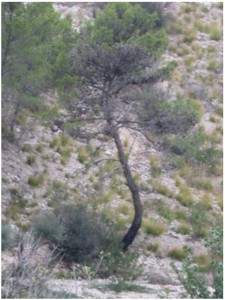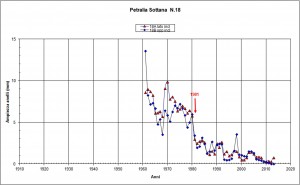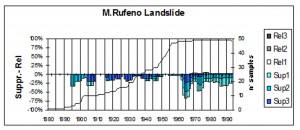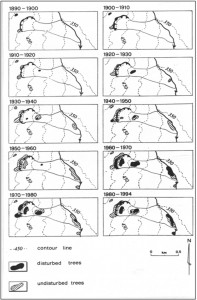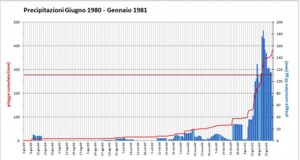Dendrogeomorphology has been applied to the study of many landslide failures in Italy and abroad since the early 90 ‘s. The method looks for growth anomalies of plants stressed by the slope movements (fig. 1- tilted tree – fig.2 ring growth stress) and provides the exact dating (from annual to seasonal) of activation or reactivation movements of landslides (fig. 3 – tree ring growth chart with stress). The aim is to trace back the “history of the landslide,” using plants as “natual inclinometers” that can record what has happened in the past, determining then periods of movement and quiescence (fig. 4 – time graph with growth anomalies and fig 5 – space-time maps of movement). Dendrochronological anomalies are then related to the analysis of extreme rainfall of varying length to identify rainfall thresholds (fig. 6 – landslide reactivation rainfall threshold) or to seismic and anthropogenic events.
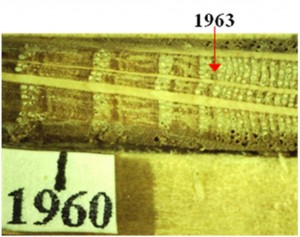
fig.2 – Oak tree sample with reductive stress since 1963 – landslide of Monte Rufeno Acquapendente (VT) central Italy

